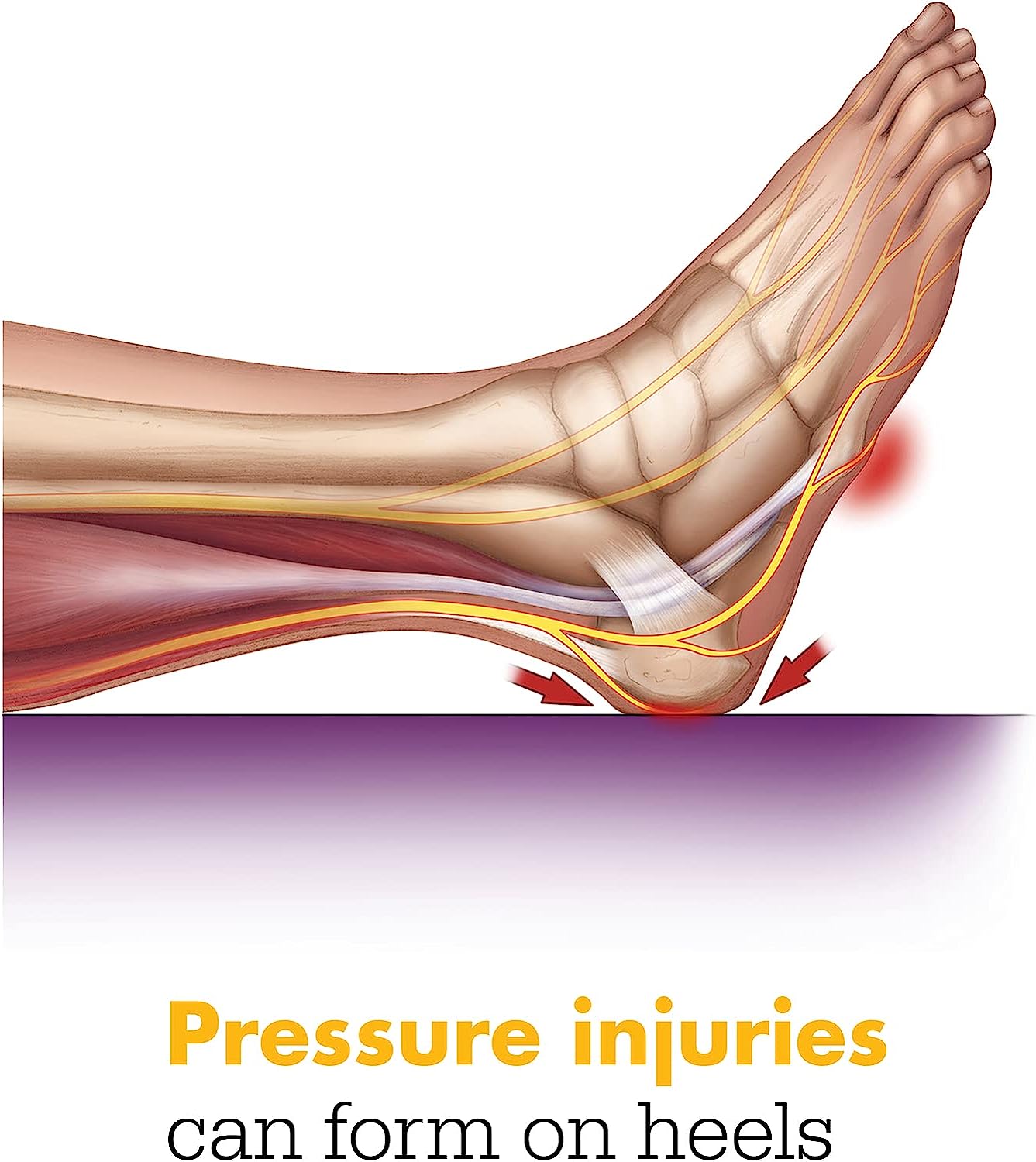Heel Protector Standard Size - SAGE
Cevi Med#: CM53891
Heel Protector Standard Size - SAGE
- Easily adjustable straps ensure a comfortable fit for a range of calf sizes (from 10in to 18in). Boots are ambidextrous.
- The Sage Heel Protectors are trusted by nurses across the U.S. to help reduce the risk of bedsores.
Reduce heel pressure injury risk
Multiple guidelines recommend the use of a heel protection device that completely offloads the heel to help prevent the development of heel pressure injuries. Prevalon® Heel Protectors are the number one brand of heel protection. They offer continuous heel offloading to protect your patients’ heels.
Choose the optimal heel protector
Experts suggest the optimal heel protector should go beyond offloading the heel. In order to effectively protect the foot and lower limb, a heel protector should prevent foot drop and use an anti-rotation wedge to keep the foot in a neutral position to protect the peroneal nerve. Prevalon Heel Protectors are available with a contracture strap to help prevent the foot from dropping and an anti-rotation wedge to keep the limb from externally rotating. They also feature a unique dermasuede interior designed to gently grip the limb so it remains fully offloaded, even when the patient moves.
Proven prevention and cost savings
A study published in JWOCN demonstrated a 100% prevention of both heel pressure injuries and plantar flexion contracture over a seven month period when using Prevalon Heel Protectors.
Prevalon’s Unique Dermasuede Interior Gently Grips the Foot


The Prevalon Heel Protector was specifically designed to address the problem of patient movement and its negative effect on heel offloading. Prevalon’s unique dermasuede fabric interior gently grips the limb so it remains fully offloaded, even when the patient is moving.
Our specialized fabric and coating creates maximum grip control with the texture of fine velvet. This soft fabric contours to and cradles the leg, calf, ankle and foot to help prevent them from rotating within the boot or sliding out of the boot—maintaining effective heel offloading.
Dermasuede fabric holds the limb securely in place while preserving patient comfort. It’s also a breathable material, so the limb remains cool while inside the heel protector.

Professional Guidelines and Recommendations
Wound Ostomy and Continence Nurses Society Guidelines
“Maintaining alignment [with a pillow] may be difficult if the patient moves. In addition, pillows do not prevent plantar flexion contracture or lateral leg and foot rotation.”
AHRQ/AHCPR Supported Clinical Practice Guidelines
“Individuals in bed who are completely immobile should have a care plan that includes the use of devices that totally relieve pressure on the heels, most commonly by raising the heels off the bed.”
NPUAP/EPUAP Prevention Guidelines
“Ensure that the heels are free of the surface of the bed… Heel-protection devices should elevate the heel completely (offload them) in such a way as to distribute the weight of the leg along the calf without putting pressure on the Achilles tendon.”
Association of Perioperative Registered Nurses (AORN) Standards Recommended Practices and Guidelines
“Use devices that eliminate or redistribute pressure” to prevent perioperative* heel pressure injuries.
*Perioperative defined as a pressure-related deep tissue injury under intact skin that presents within the first 5 days following surgical procedures.










